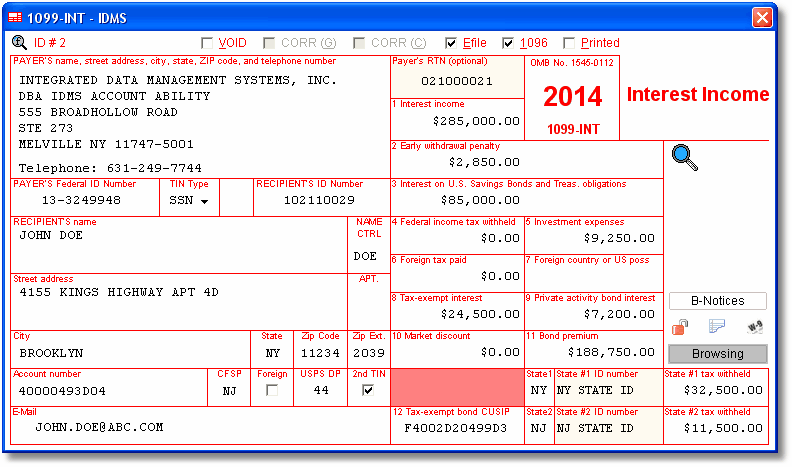Income Tax
2014 Review of W-2 and 1099 Preparation Programs
Oct. 10, 2014

By Steven Phelan, CPA.CITP
As we approach the end of the year, many tasks are still ahead of accounting professionals. There are year-end tax planning situations to address, year-end accounting issues required to finalize financial statements and, of course, year-end reporting compliance for W-2s and 1099s.
Although the rules have largely remained the same over the past several years, the importance of this year-end filing remains significant. As a reminder, the Affordable Care Act (ACA) requires certain businesses to report the cost of health care coverage on the annual W-2 filings. The ACA also modified tax forms to include questions regarding the mandate for all businesses to file 1099 forms to recipients as required.
As we look at the current year review of W-2 and 1099 software, it is important to note that not all solutions reflect final 2014 rules and regulations. Some vendors are also in the midst of adding and enhancing features for the upcoming release. Typically, the October thru December timeframe produces final software results. Each product review reflects updates and expected changes as each respective software vendor provided information.
For the current year reviews, there is only one cloud option for W-2 and 1099 processing, After-the-Fact Payroll by AccountantsWorld. All remaining products install locally or in a network environment. Most of the software solutions offer add-on modules that provide functions separate from the core product. Without the add-on modules, many solutions produce only basic functionality.
From a design and usability prospective, most products offer input screens similar to the forms themselves. This, of course, makes data entry much easier, especially for less experienced staff members. Throughout this product category, the data entry screens are generally clean and intuitive. Many of the summary forms, such as the W-2 and 1096, automatically populate to mitigate any additional required data entry.
Reporting aspects of each vendor solution are usually the key differentiating factor. As with many payroll solutions, support for all forms beyond traditional forms is often missing. To enhance the forms capabilities, users will typically need to purchase add-on modules. A similar scenario exists for printing features, with add-on modules required to print on plain paper or generate PDF files.
All vendors support electronic filing of the core federal compliance forms. Some of the state electronic filing compliance is absent, however, in most vendors. Many of the vendors provide functions to assist users in verifying Social Security Numbers through verification programs offered by the IRS and Social Security Administration.
Microsoft Excel and CSV file formats remain the standard for data import. QuickBooks support is available with some products, but oftentimes requires a separate module. Many of the vendors provide the W-2 and 1099 reporting as a separate product within a suite of other product offerings. When this is the case, tight integration with the other suite products is generally positive.
All products reviewed provide a wide variety of help and support options. Traditional in-program help and manuals are included in addition to searchable tools on vendor maintained websites. Phone, fax and email support is available, but each vendor treats these options differently. Some are favoring email and web chat options over phone-based support. All help and support options are included within the product licensing fees.
